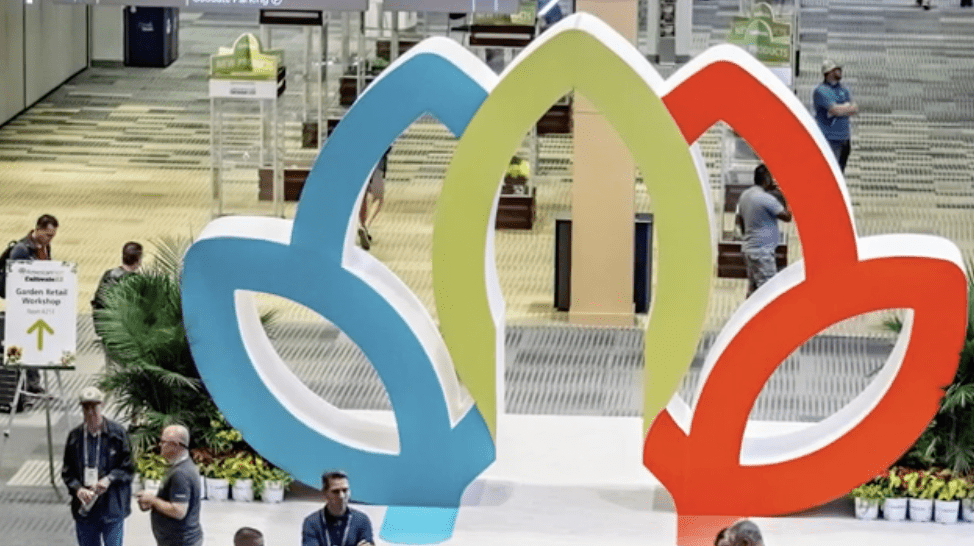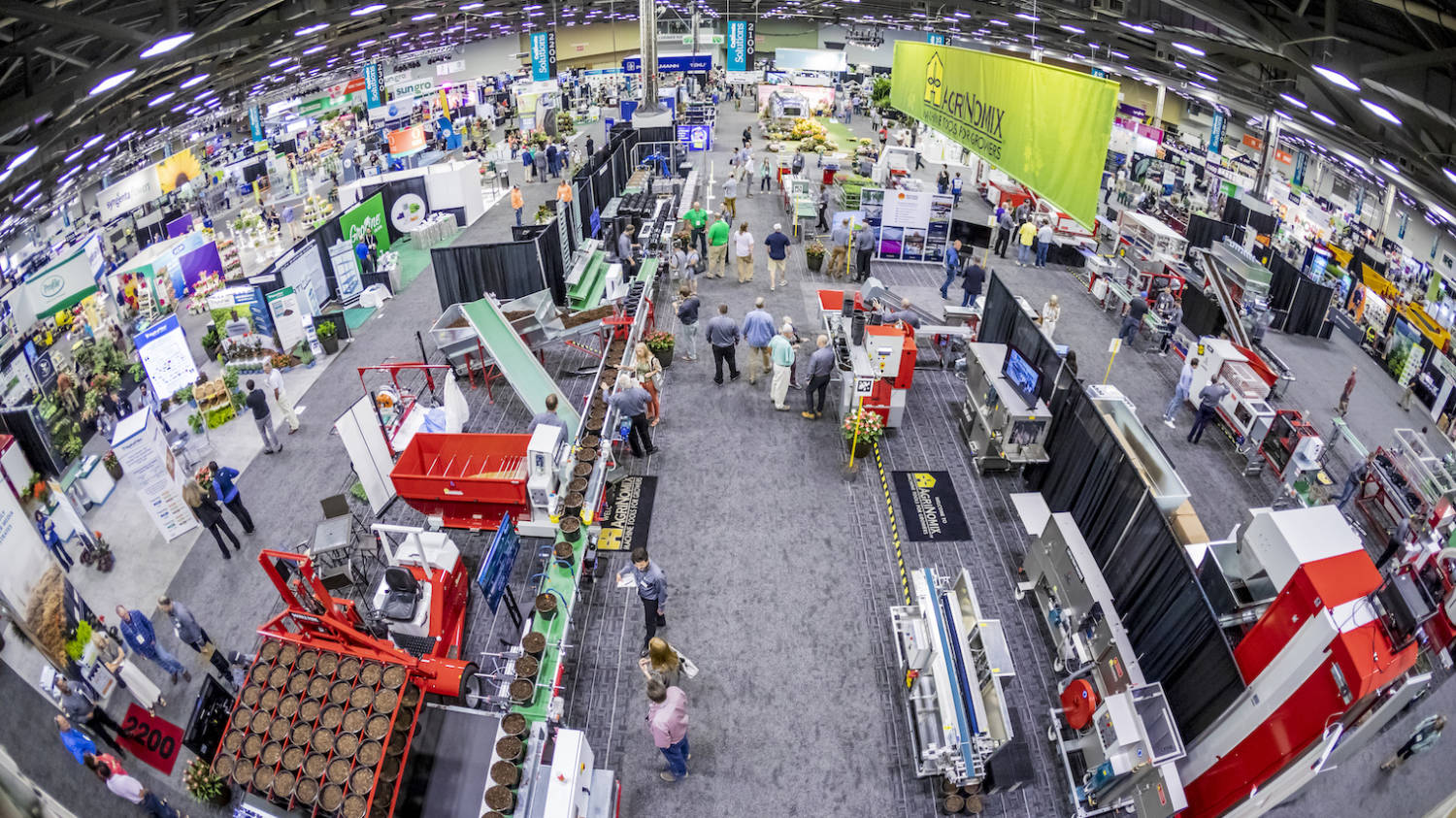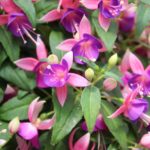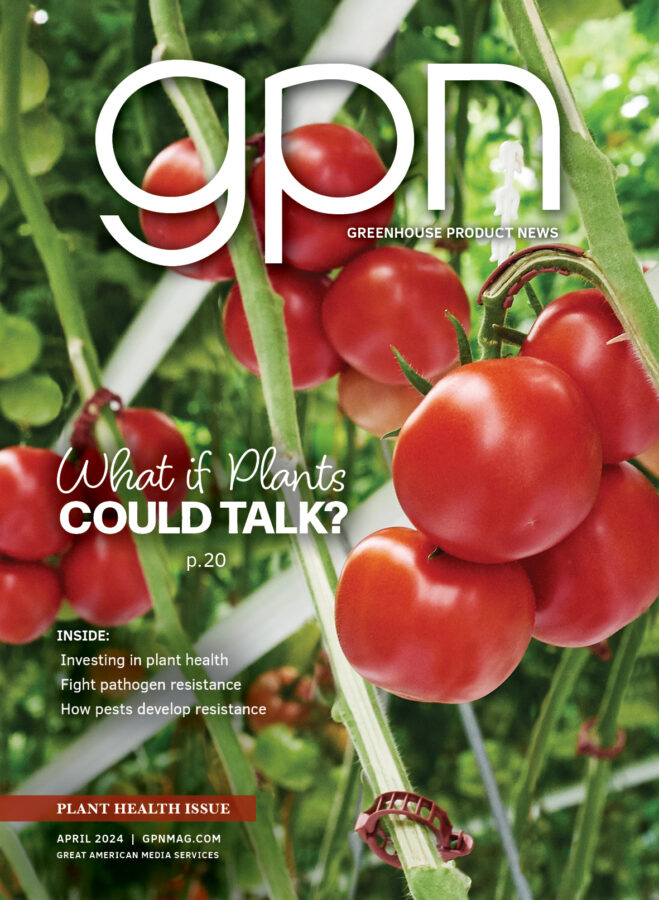Flowering of Petunia at Low Temperatures
Most petunias are facultative long-day plants, since they flower earlier when grown under long days compared to short days. Early-season petunias are grown when the natural days are still short, so growers often provide low-intensity long-day lighting to accelerate flowering. Equally successful strategies to create long days include lighting from the end of the day until the day length is at least 13 to 14 hours, or providing lighting during the middle of the night for three to four hours. Regardless of lighting strategy, the intensity at plant level should exceed 1 µmol_m-2_s-1.
Some studies have shown the photoperiodic response in petunia is different at low production temperatures. Some varieties reportedly become more day neutral when grown at low temperatures (less than 63° F). However, we were not able to obtain data to support this. We worked with PanAmerican Seed to test the interaction of temperature and daylength in three Wave petunia cultivars: ‘Easy Wave Neon Rose’, ‘Classic Wave Purple’ and ‘Improved Wave Purple’. Seedlings were initially grown at 68° F, and when they had an average of eight leaves per plant, they were grown in separate greenhouses at 57 or 68° F. Day-extension lighting using incandescent lamps created a 10-hour (short day) or 16-hour (long day) photoperiod. We recorded the date the first flower on each plant fully opened, and days from transplant to flowering were determined.
All plants flowered when grown under the 16-hour long day. Under short days, essentially all ‘Easy Wave Neon Rose’ and ‘Improved Wave Purple’ flowered, but only a portion of the ‘Classic Wave Purple’ flowered (Table 1). In addition, flowering occurred earlier at 68° F than at 57° F. As previously reported, plants grown at 57° F had less of a photoperiod response than when grown at 68° F. Long days accelerated flowering less when petunias were grown at cool temperatures. For example, in ‘Easy Wave Neon Rose’, plants flowered three weeks earlier when provided with long days at 68° F, but only one week earlier when provided long days at 57° F (Figure 1).
We also noticed the flowering habit was different in ‘Easy Wave Neon Rose’ grown under long days than short days. In a majority of plants grown under long days, flowering occurred first on the primary shoot, whereas when grown under short days, nearly all plants first flowered on one of the lateral stems. In all three varieties, some flower buds failed to develop when grown under short days suggesting that photoperiod may have more of an effect on flower development than flower initiation. A similar response has been reported in some pansy varieties.
The three main conclusions of this study, (although we don’t know whether they apply to all petunias or just some) are:
1. For the most rapid and uniform flowering of petunia, provide warm temperatures and long days.
2. Long days have less of a stimulating effect on flowering when plants are grown at 57° F than at 68° F. In other words, if petunias are grown cool (less than 63° F), the benefit of long days is relatively small.
3. If natural short days are provided to a petunia crop, higher temperatures accelerate flowering less than when petunias are grown cool. In other words, if petunias are grown under short days, the benefit of warmer temperatures is relatively small.


 Video Library
Video Library 




















